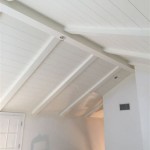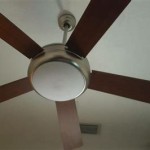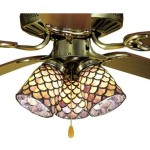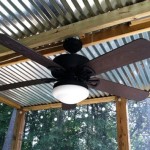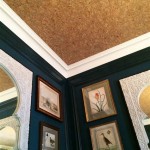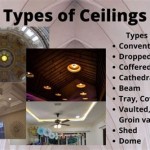Understanding Ceiling Light Fixture Parts List
Ceiling light fixtures are ubiquitous in both residential and commercial spaces, providing essential illumination and contributing to the overall aesthetic of a room. Understanding the individual components that constitute a ceiling light fixture is crucial for installation, repair, and even informed selection of new fixtures. A comprehensive parts list enables individuals to troubleshoot issues, replace damaged parts, and appreciate the engineering and design considerations that go into these indispensable lighting elements.
This article aims to provide a detailed explanation of the various components that comprise a typical ceiling light fixture, covering a broad range of fixture types and highlighting the function and importance of each part. While specific designs may vary, the fundamental elements discussed below form the basis of most ceiling lighting systems.
Essential Electrical Components
The electrical components of a ceiling light fixture are paramount to its functionality, ensuring a safe and reliable flow of electricity to the light source. These components are responsible for connecting the fixture to the building's electrical system and regulating the current to the lamp.
Junction Box: Also known as an electrical box, the junction box is a metal or plastic enclosure typically recessed within the ceiling. It serves as a protective housing for electrical connections and provides a secure mounting point for the light fixture. The junction box protects the wiring from damage and prevents accidental contact with live wires. Building codes often mandate the use of approved junction boxes for safety reasons.
Wiring: The wiring within the ceiling light fixture connects the fixture to the building's electrical system. Standard wiring includes hot (black), neutral (white), and ground (green or bare copper) wires. These wires carry the electrical current to the light source and provide a return path, while the ground wire offers a safety path for fault currents. Proper wiring is crucial for preventing electrical shocks and fire hazards.
Wire Connectors: Wire connectors, commonly referred to as wire nuts, are used to securely join the wires within the junction box. They provide an insulated connection, preventing shorts and ensuring a reliable electrical circuit. Different sizes and types of wire connectors are available to accommodate various wire gauges and connection needs.
Ground Screw: The ground screw is a small screw within the junction box and sometimes on the fixture itself. It's used to connect the ground wire to the metal junction box or fixture, providing a path for fault currents to safely return to the electrical panel, thereby tripping the circuit breaker and preventing electrical shock.
Ballast (for Fluorescent and Some LED Fixtures): A ballast is an electrical component used in fluorescent and some LED light fixtures to regulate the current flowing to the lamp. It provides the initial high voltage needed to start the lamp and then limits the current to maintain stable operation. Ballasts can be either magnetic or electronic, with electronic ballasts generally being more energy-efficient and offering quieter operation.
Transformer (for Low-Voltage Fixtures): In low-voltage lighting systems, a transformer is used to step down the standard line voltage (e.g., 120V or 240V) to a lower voltage (e.g., 12V or 24V) suitable for the specific lamps used. Transformers are typically housed within the fixture or in a separate enclosure nearby.
LED Driver (for LED Fixtures): An LED driver performs a similar function to a ballast but specifically for LED light sources. It regulates the voltage and current supplied to the LEDs, ensuring consistent brightness and preventing damage to the sensitive electronic components.
Structural and Mounting Components
These components are critical for physically securing the ceiling light fixture to the ceiling and providing a stable and safe installation. Proper installation of these parts is essential for preventing the fixture from falling and ensuring its long-term stability.
Mounting Bracket: The mounting bracket, also known as a crossbar, is a metal plate attached to the junction box. It provides a secure attachment point for the light fixture. The bracket typically has holes or slots that align with mounting screws or bolts on the fixture. Different types of mounting brackets are available to accommodate various fixture designs and junction box configurations.
Mounting Screws/Bolts: These screws or bolts are used to attach the light fixture to the mounting bracket. The size and type of screws or bolts required will depend on the weight and design of the fixture. It is imperative to use the correct fasteners to ensure a secure and stable installation.
Canopy: The canopy is a decorative cover that conceals the junction box and mounting hardware. It provides a finished appearance and protects the wiring from dust and debris. Canopies come in various shapes, sizes, and finishes to match the style of the light fixture.
Nipple: A nipple is a short, threaded pipe used to connect the canopy to the mounting bracket. It provides a means of adjusting the canopy's height and ensuring a flush fit against the ceiling. Nipples are commonly used in chandeliers and pendant lights.
Chain/Rod (for Chandeliers and Pendants): Chandeliers and pendant lights often use a chain or rod to suspend the fixture from the ceiling. The length of the chain or rod can be adjusted to achieve the desired hanging height. These components must be appropriately sized and rated to support the weight of the fixture.
Hickey: A hickey is a fitting used to connect the stem or chain of a pendant light or chandelier to the mounting bracket. It provides a secure and adjustable connection point.
Light Source and Aesthetic Components
These components are responsible for producing light and contributing to the aesthetic appeal of the fixture. The type of light source and the design of the aesthetic components significantly influence the overall look and feel of the room.
Lamp (Bulb): The lamp, commonly referred to as a bulb, is the light-producing element of the fixture. Different types of lamps are available, including incandescent, halogen, fluorescent, and LED. Each type has its own characteristics in terms of energy efficiency, lifespan, and light output. LED lamps are increasingly popular due to their energy efficiency and long lifespan.
Lamp Socket/Lampholder: The lamp socket, also known as a lampholder, is the receptacle that holds the lamp. It provides the electrical connection to the lamp and supports its weight. Different types of lamp sockets are available to accommodate various lamp bases, such as Edison screw bases (E26, E12) and bayonet bases (BA15d).
Shade/Diffuser: A shade or diffuser is a translucent or opaque covering that surrounds the lamp. It softens the light and reduces glare, creating a more comfortable and visually appealing illumination. Shades and diffusers come in a wide variety of materials, shapes, and colors to complement the style of the fixture.
Reflector: A reflector is a polished surface that redirects light from the lamp to increase its intensity and coverage. Reflectors are commonly used in recessed lighting and spotlights to focus the light beam.
Trim Ring (for Recessed Lighting): The trim ring is the visible part of a recessed light fixture that surrounds the opening in the ceiling. It provides a finished appearance and helps to conceal any imperfections in the ceiling. Trim rings are available in various styles and finishes to match the surrounding decor.
Globes and Crystals: Globes and crystals are decorative elements often used in chandeliers and other decorative light fixtures. They add visual interest and sparkle to the fixture, enhancing its aesthetic appeal. Globes can be made of glass, plastic, or other materials, while crystals are typically made of leaded glass or other high-refractive-index materials.
Lenses Lenses are transparent or translucent covers positioned in front of the light source. They serve to refract the light, altering its direction and distribution. Lenses are frequently used to focus the light, create a specific beam angle, or diffuse the light for a softer, more even illumination. They can be made from glass, plastic, or other transparent materials, with different shapes and textures to achieve desired lighting effects. Moreover, lenses can provide protection to the light source from environmental elements like dust and moisture.
Understanding the individual components of a ceiling light fixture empowers individuals to make informed decisions about their lighting choices, perform basic repairs, and appreciate the engineering and design that goes into these essential fixtures. Knowing the function of each part – from the junction box to the shade – allows for a more comprehensive understanding of how light is created and distributed within a space.

Light Fixture Parts Names Explained 2025 Modern Place

Light Pendant Component Anatomy Edison Globes Pty Ltd

Light Fixture Luminaire Components Archtoolbox

Light Fixture Parts Names Explained 2025 Modern Place

Adding Light How To Install A Fixture Diy

Medes Led Dimmable Ceiling Lamp Instructions

Create Windlight Helm Dc Ceiling Fan User Manual

Bicycle Glass Co 3 Pendant Linear Chandelier Instruction Manual

Vzm35 Hunter Fan Ing On Low Medium Barely Turning Works Find High General Discussion Inovelli Community

Zhongshan Guzhen Yesheng Lighting Factory Hv48 Retractable Ceiling Fan With Bluetooth Speaker User Guide
Related Posts


